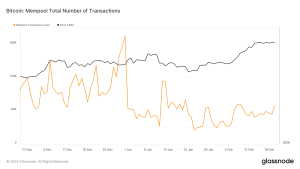
The company co-founded by well-known bitcoiner Michael Saylor, MicroStrategy, plans to launch new services based on Lightning Network next year.
MicroStrategy and Lightning Network
It is worth noting that MicroStrategy is neither a crypto company nor a company specializing in payments or financial transactions, nor even a financial company.
MicroStrategy was founded as far back as 1989 as a business intelligence company.
In 1998 it landed on the stock market, and thanks to the infamous dot-com bubble in March 2000, its share price skyrocketed to $3,300 after debuting at $81.
Once that bubble burst, its share price plummeted just above $4 in 2022, and until 2020 it never steadily returned above $200.
The turning point came in the very second half of 2020 when then-CEO Michael Saylor decided to have MicroStrategy purchase large amounts of Bitcoin. At the time, the price of BTC was below $12,000, and thanks to the boom of 2021, MicroStrategy’s share price skyrocketed to $1,300.
Although the 2021 peak was much lower than that of 2000, partly due to inflation, the MicroStrategy of 2021 was a completely different company than that of 2000.
MicroStrategy and Bitcoin (BTC)
Over the months, the company invested heavily in Bitcoin, so much so that it now holds about 132,500 BTC, with a total current value of about $2.2 billion.
It is worth mentioning, however, that in order to purchase these 132,500 BTC, the company has invested just over $4 billion, so it is currently at a heavy loss. In fact, the average purchase price was about $30,400, because during 2021 it continued to buy BTC despite the bubble.
MicroStrategy has increased its #Bitcoin Holdings by ~2,500 #BTC. As of 12/27/22 @MicroStrategy holds ~132,500 bitcoin acquired for ~$4.03 billion at an average price of ~$30,397 per bitcoin. $MSTRhttps://t.co/lcMeULcGQk
— Michael Saylor
(@saylor) December 28, 2022
Ever since the company decided to get so much exposure to Bitcoin, it has begun to devote resources and energy not only to investments, but also to IT development in this area.
For some time now, it has also been involved in consultancy for companies, and the financial sector is among the various areas in which it provides its services.
Among the various services, it offers at the financial level is software that enables in-depth analysis, and this reveals that the company has also been involved in software development for some time now.
There is also an entire section on their website dedicated to Bitcoin-related products and services.
MicroStrategy invests in the development of Lightning Network technology
In particular, yesterday Michael Saylor held a Space on Twitter titled “Bitcoin Roundtable” during which he revealed that MicroStrategy is exploring software and solutions that use Lightning Network to support enterprise marketing and cybersecurity.
Lightning Network is Bitcoin’s main layer 2, based on Bitcoin’s blockchain, and capable of making transactions in BTC virtually instantaneous and at a very low cost.
Saylor said that thanks to the new LN-based solutions, marketing managers could potentially organize campaigns to incentivize customers, for example by distributing Satoshi rewards in exchange for various activities such as posting reviews or completing surveys.
It is worth mentioning that the Satoshi (Sat) is the smallest unit into which on-chain Bitcoin can be fractionated, and corresponds to one hundred millionth of BTC. As of today, 1 Sat is worth about 0.17 thousandths of a dollar.
In addition, he hypothesized the implementation of a Bitcoin-based paywall, called the “Lightning wall,” which would protect websites from cyber attacks by requiring visitors to deposit a small amount of money in Satoshi, which returned automatically once they leave the website. In fact, according to Saylor, eventually someone will even launch a sort of “Lightning version” of the Web browser, containing a Lightning wallet with stablecoins and various cryptocurrencies.
Indeed, not only does LN also allow immediate microtransactions at a laughable cost, but it also enables trustless scheduling of transactions.
MicroStrategy’s goal is to get to the point of providing a solution that allows companies to start a Lightning infrastructure in an afternoon.
The Future of Lightning Network
Saylor’s ideas are not absurd. Although he is no longer the longtime CEO of MicroStrategy, but merely executive chairman, he described a futuristic picture that is not at all absurd.
What can already be done to date with Lightning Network cannot be done with any other technology based on an infrastructure as secure as that of Bitcoin, and on a widely used cryptocurrency like BTC.
Immediate and very low-cost online micropayments are rare, especially with fiat currencies, as is the programmability of money with solid currencies.
Among cryptocurrencies, arguably only BTC and ETH can be considered solid currencies, although still extremely volatile. In addition, there are also stablecoins, but as the implosion of UST has shown, they are not risk-free certainties.
Lightning Network offers the robustness and security of the Bitcoin network, both of which are extremely high, with the guarantee that the protocol can never be changed at will by anyone, even in the future.
To date, in this respect, only Ethereum can compete, but on Ethereum there are no solutions already widely in use, such as Lightning Network, that can enable immediate transactions at a laughable cost.
If MicroStrategy, or other players of that size, bring to market innovative and workable solutions based on the robustness of Bitcoin and LN it is possible that these technologies in the future will eventually enter the everyday lives of all web users.




















